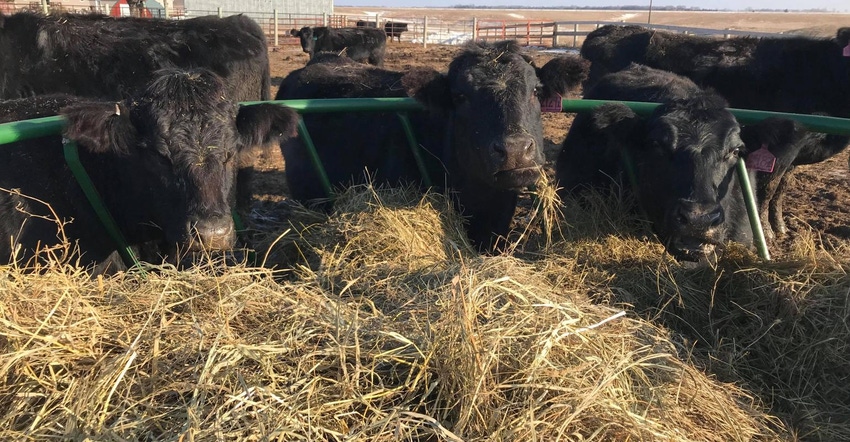Activists may be looking for ways to infiltrate your livestock enterprise. Are you prepared with a crisis plan in place?
June 15, 2020

A few weeks ago, I wrote about how an animal rights activist group was using aerial footage to identify the location of animal agricultural facilities and encouraging members to “create a paper trail of abuse” by collecting photos and imagery of these farms and ranches.
READ: Activists working to pinpoint your ranch on an aerial map
It was a chilling reminder that there are people who would like to do us harm by eliminating our way of life and our businesses.
We often hear of how activists use drones to serve as eyes in the skies over livestock facilities. We also hear cases of how they might doctor resumes in order to wrongfully gain employment on a livestock operation. And while on these properties, they film and often create scenes of abuse to play in the media, target the owners and pull at the heartstrings of good-hearted donors in order to fill their coffers.
Now, some of this may seem so far-fetched that it’s hard to believe. But the reality is that this does happen, and perpetrators are feeling more emboldened to pursue their mission to eliminate animal agriculture and take meat, dairy and eggs off the dinner table.
They are even willing to risk jail time to do it, and we have also heard horror stories of activists breaking into barns, stealing (“rescuing”) livestock and/or trying to water or get into livestock trailers as they transport animals on the road.
So how do you protect yourself from these bad actors? What steps can you take to safeguard your home, your animals and your private property?
In light of riots, looting, fires and other criminal activities that have dominated the news in recent weeks, this topic is more relevant now than ever before.
While we can’t control all risk factors, Heidi Carroll, South Dakota State University Extension livestock stewardship field specialist and Beef Quality Assurance coordinator, offers tips on being vigilant in keeping livestock, property, employees and family safe with added security and surveillance.
Here are five of some of Carroll’s many excellent tips:
1. What is public information?
Carroll writes, “Know what farm information is available electronically on public platforms and monitor social media pages for potential threats. Remember, the goal is to remain transparent about the high-quality care animals receive while being raised for food. Not everyone with interest in where their food comes from can physically visit your farm or ranch, and those platforms can provide that information.”
2. Who are you hiring?
“Practice good hiring practices,” she says. “Review applicant materials thoroughly and briefly research individuals through Internet searches and calling references. Ask existing employees for recommendations on people to hire. Implement strict supervision or on-the-job training with a partner for a set number of days or weeks after hiring.
“Meet with new employees regularly within the first days/weeks and use an employee evaluation form to discuss strengths and weaknesses in job performance. This is especially important for employees with intensive animal care responsibilities.”
3. What are your policies for visitors?
“Discuss visitor policies with all family members and employees,” Carroll advises. “Communicate the importance of having visitors check-in at an office or central location to ensure everyone’s safety and to practice good biosecurity. Empower each employee or family member to greet and escort all visitors respectfully and ask a few questions about the purpose of their visit.
“Ensure that all employees and family members have the direct phone number of the supervisor or owner designated to assist visitors or unwelcome guests. Visitor logs can be a simple way to track visitors and gives you time to have a conversation with people to learn more about their intentions for visiting.”
4. Are your biosecurity policies clearly communicated?
“Ensure security and biosecurity policies are followed,” she says. “Posting signs at property entrances or pastures communicates your biosecurity and no-trespass expectations. These signs can communicate that animals are on the property and a phone number for people to call if they have questions or concerns. Identify restricted areas and post them. Lock offices and cabinets. Maintain or increase lighting around facilities.”
5. What are your rules for technology use?
“Create a phone, camera, or other technology use policy and enforce it,” she said. “Employees need ways to communicate around the farm or ranch but ensure expectations are verbalized and agreed upon by all. If your farm or ranch welcomes tours and visitors, create a waiver, or use agreement, and have all visitors sign it when they arrive. At a minimum, verbally discuss photo use expectations during introductions. Another strategy to allow pictures is to determine one or two locations around the operation that are the ‘photo op stops.’”
Click here to read all of Carroll’s tips, including which records to keep, types of surveillance to have on site, how to engage if a protest or riot occurs at your site, what to do to promote a positive relationship with your community, how to respond to suspicious activity and more.
I think these tips are great and are a reminder that we can be transparent and open with our consumers. But while doing so, we also must remain vigilant and on guard for those who seek to negatively impact our operations. Be prepared and plan how your business would respond to crisis situations.
It’s unfortunate that we need to have these conversations, but again, it’s better to have thought it through than to be caught off guard if it should ever happen to you.
The opinions of Amanda Radke are not necessarily those of beefmagazine.com or Farm Progress.
About the Author(s)
You May Also Like




.png?width=300&auto=webp&quality=80&disable=upscale)
